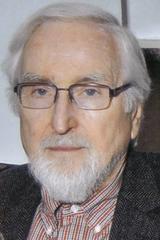URL: https://www.desy.de/news/news_search/index_eng.html
Breadcrumb Navigation
DESY News: DESY’s Anton Piwinski to receive Robert R. Wilson Prize
News
News from the DESY research centre
DESY’s Anton Piwinski to receive Robert R. Wilson Prize
Anton Piwinski, a scientist in the DESY group for accelerator physics from 1966 until his retirement in 1999, is to receive the 2017 Robert R. Wilson Prize, which is awarded by the American Physical Society (APS). He is receiving the prize jointly with the US scientists Sekazi Mtingwa and James Bjorken, in recognition of his outstanding contribution to accelerator physics. The prize will be presented at the APS Meeting in January 2017. The prize is being awarded for the development of a detailed theory of so-called intrabeam scattering, which is of fundamental significance for the beam quality that can be achieved by proton and electron storage rings.
Anton Piwinski first proposed a largely complete theory of intrabeam scattering in 1974, and this was later refined and elaborated by him and in parallel by S. Mtingwa and J. Bjorken. The scattering of particles inside the beam leads to an increase in the beam emittance, and thereby to a broadening of the beam. This limits the performance both of colliders and synchrotron radiation sources. The effect has been observed during the past decades in numerous accelerator facilities, including for example the HERA proton ring, and can be precisely calculated by computer programs based on the theories of Piwinski, Mtingwa and Bjorken. At DESY, intrabeam scattering in the future, ultra-low emittance PETRA IV storage ring will be a key factor in determining the brightness that can be achieved.For more than three decades, Anton Piwinski was instrumental in shaping the development of accelerator physics at DESY. In addition to his theory of intrabeam scattering, he carried out pioneering research in the field of beam-beam interactions, as well as transverse-longitudinal coupling and satellite resonances, which has met with international acclaim. In 2005, he was awarded the prize of the US Particle Accelerator School (USPAS) for his fundamental contributions to the understanding of charged particle beams in circular accelerators.




